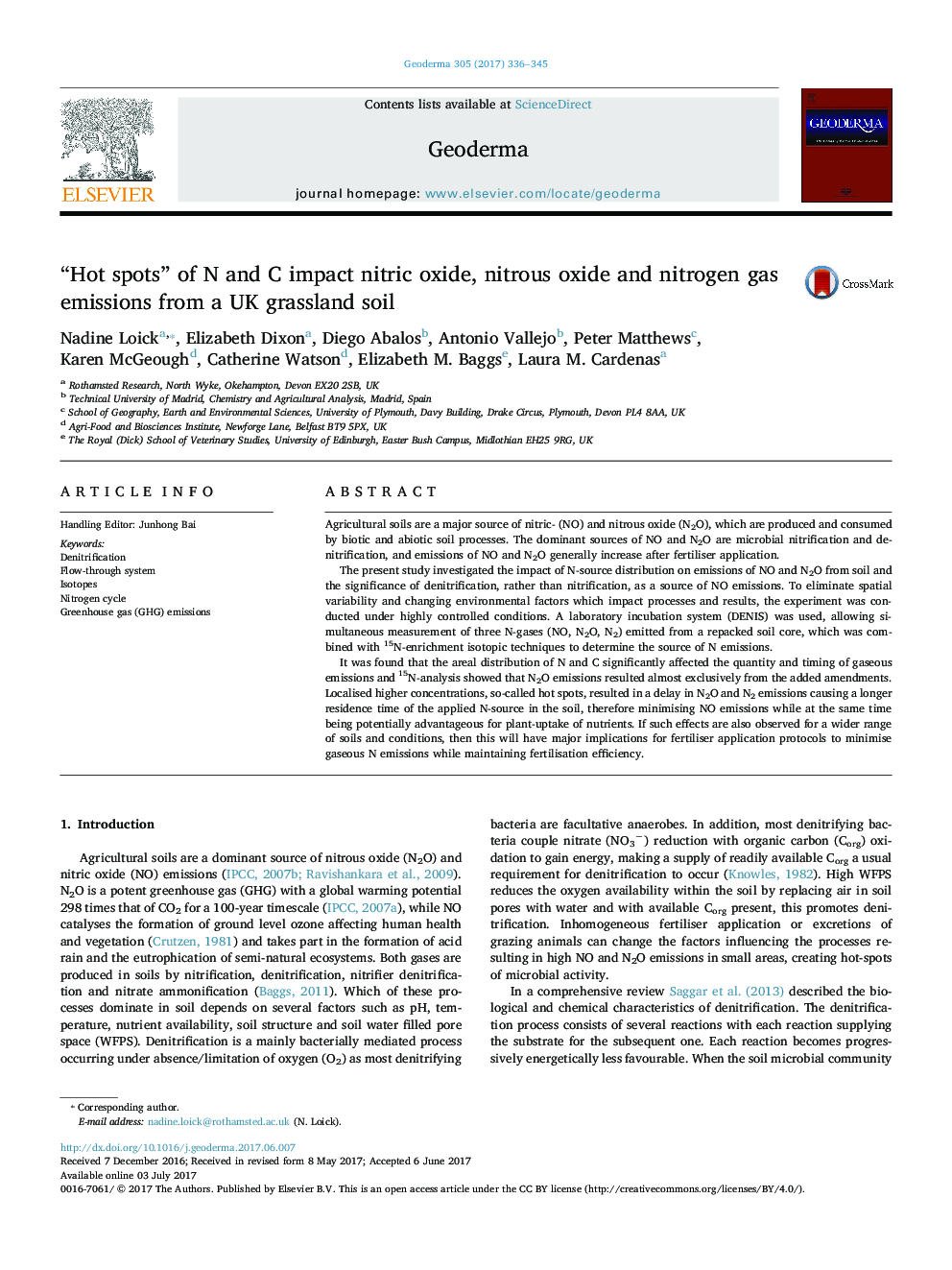| کد مقاله | کد نشریه | سال انتشار | مقاله انگلیسی | نسخه تمام متن |
|---|---|---|---|---|
| 5770302 | 1629412 | 2017 | 10 صفحه PDF | دانلود رایگان |

- Gaseous emissions were studied at the core scale under highly controlled conditions.
- N2O and N2 emissions from denitrification depended on applied amounts of N and C.
- NO emissions did not depend on applied N and C concentration but on surface area.
- Between 70 and 80% of N2O emissions derived from the applied N.
- About 30% of the amount of applied N was lost via gaseous emissions.
Agricultural soils are a major source of nitric- (NO) and nitrous oxide (N2O), which are produced and consumed by biotic and abiotic soil processes. The dominant sources of NO and N2O are microbial nitrification and denitrification, and emissions of NO and N2O generally increase after fertiliser application.The present study investigated the impact of N-source distribution on emissions of NO and N2O from soil and the significance of denitrification, rather than nitrification, as a source of NO emissions. To eliminate spatial variability and changing environmental factors which impact processes and results, the experiment was conducted under highly controlled conditions. A laboratory incubation system (DENIS) was used, allowing simultaneous measurement of three N-gases (NO, N2O, N2) emitted from a repacked soil core, which was combined with 15N-enrichment isotopic techniques to determine the source of N emissions.It was found that the areal distribution of N and C significantly affected the quantity and timing of gaseous emissions and 15N-analysis showed that N2O emissions resulted almost exclusively from the added amendments. Localised higher concentrations, so-called hot spots, resulted in a delay in N2O and N2 emissions causing a longer residence time of the applied N-source in the soil, therefore minimising NO emissions while at the same time being potentially advantageous for plant-uptake of nutrients. If such effects are also observed for a wider range of soils and conditions, then this will have major implications for fertiliser application protocols to minimise gaseous N emissions while maintaining fertilisation efficiency.
121
Journal: Geoderma - Volume 305, 1 November 2017, Pages 336-345